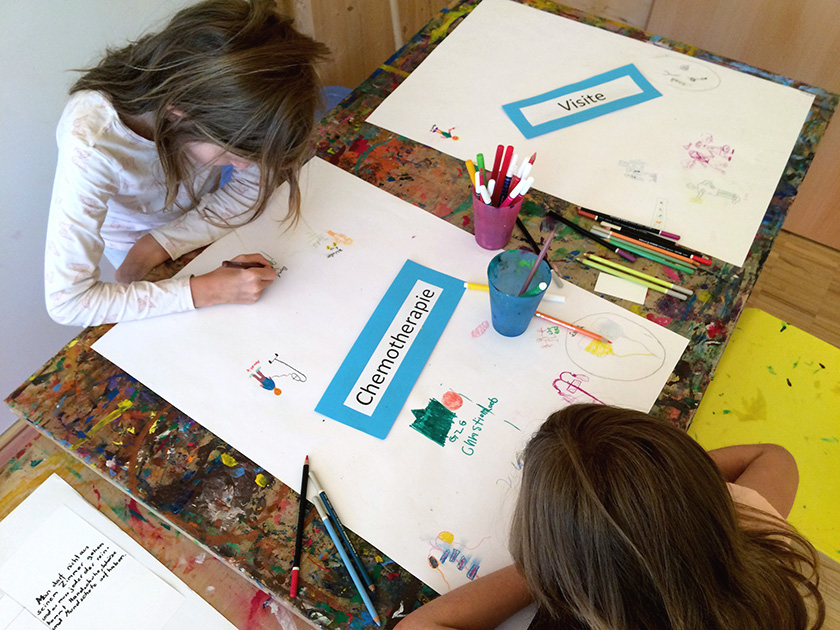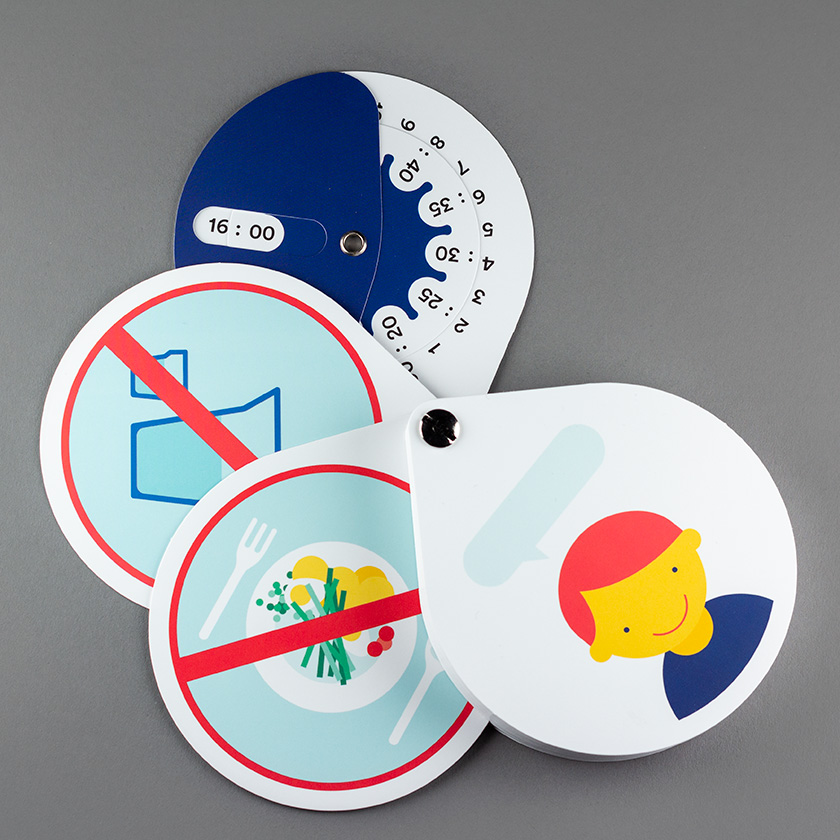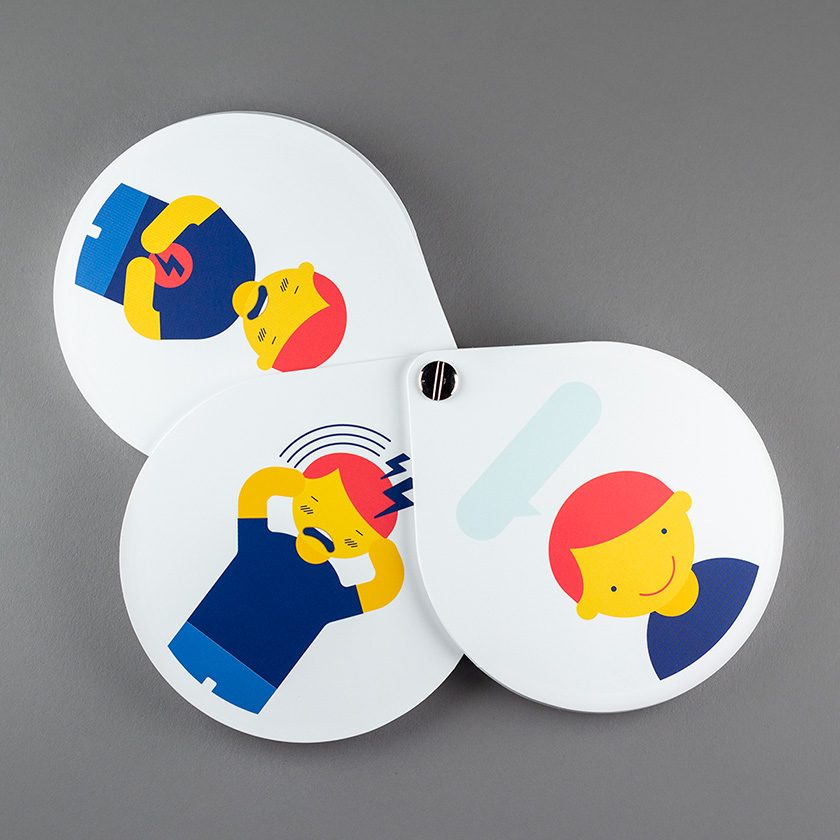Loading …
Talking in Symbols
Information Design & Illustration
Children have a high chance of recovery if they have cancer. In Austria in particular, treatment in clinics is very good and, above all, holistic. Because it is not just about medical treatment, but also about good communication with psychological support in an absolutely exceptional situation.
There are many people involved in the game, with focus on the child or adolescent patient. They want to know what their diagnosis and perspective is, what happens next and how they can actively contribute to their recovery. Information is also absolutely essential for parents. Doctors, nurses and the psychosocial team need feedback from the young patients in order to be able to react quickly and correctly.
Language is often a barrier. A migration background, a different cultural understanding, difficulties in articulating themselves or restrictions on perception due to side effects of the therapy disrupt the flow of communication.
The image-based tool Talking in Symbols with illustrated images helps to make communication in everyday clinical practice more intuitive and understandable. It is currently in use in various clinics in Central Europe and was awarded the Occursus sponsorship award in 2018.

User-Centered Design Research
The project idea for this new social design tool arose directly from practice. Communicative challenges between the treatment team, patients and parents are everywhere in everyday clinical practice.
Therefore, a research cooperation with the psychosocial team of the Pediatric Neuro-oncology of the University Clinic for Children and Adolescent Medicine at the General Hospital Vienna and the Austrian Child Cancer Help was started in order to develop a professional tool and communication strategy.
Over a year, the most important communication content was collected in workshops with doctors, psychologists and especially children. The content was structured into the categories basic needs, sensations / symptoms, emotions, therapy and offers in the clinic, leisure time, medical terms, prohibitions, dates and outcome, which were then translated into illustrations by us.
The starting point for the design of the picture card set was a workshop for young patients on Sonneninsel, a follow-up center for children’s cancer aid in Upper Austria. The central communication topics were initially drawn and discussed by the children in a playful manner – a first, meaningful collection of personal perceptions of different therapy situations laid the basis for the content of our further design work.

Visual Language
To find the appropriate visual language, we created two directions.


Expressing emotions


Personal identitfication with characters
The key was to give all young patients their personal set. We tested different characters. “I am a girl”, “I am a boy” or “I am a tiger” were rated similarly positively. We decided to print three different sets with these protagonists. At the beginning of the therapy everyone gets their personal set in a handy packaging and write their name on the cover.


Einleitung
The set also includes the central medical interactions. This makes it easier for doctors to explain treatments.


Rotation calendar and clock
The set is completed by a rotating calendar and a clock – making appointments easy. They are easy to use and have been integrated into the compartments.


Dialogues from combined images
All important communication situations can be perfectly accompanied in everyday clinical practice. What does the treatment team want to tell? How does child feel? What happens next? What is allowed, what is not? In practice, the tool, which consists of around 70 individual images, can be adapted in a playful way – situations or processes can be put together again and again through the flexible combination of characters – short dialogues are created.






A research and design project with the University Clinic for Paediatrics and Adolescent Medicine / Paediatric Neuro-oncology at Vienna General Hospital and the Austrian Children’s Cancer Aid, initiation of the project idea: Dr.in Liesa Weiler-Wichtl & Mag.a Verena Fohn-Erhold.
Further information on direct support for the project:
www.kinderkrebshilfe.at